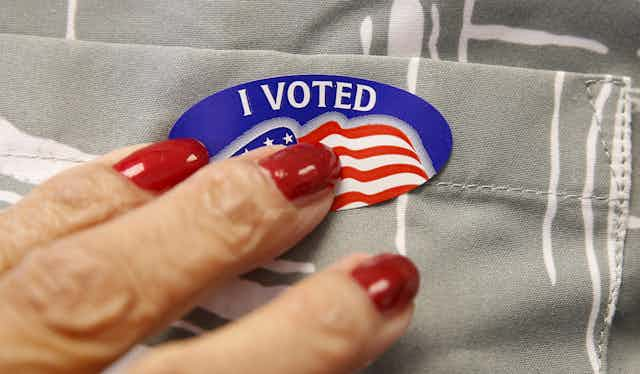If there’s one thing the Democrat and Republican presidential candidates can agree on these days is that they both want you to vote (for them) this November.
To that end, both political parties tend to have extensive get-out-the-vote operations designed to make sure their supporters actually go to the polls on Election Day.
It turns out that translating voter intention into actual votes is not always easy. While assessing public opinion, for example, pollsters are aware of the challenge that many people don’t follow through on their stated intentions. In fact, most infrequent voters who report intending to vote don’t end up voting.
So how can the campaigns of Hillary Clinton and Donald Trump make sure their supporters follow through on Nov. 8? Behavioral science research offers a range of tools. One particularly powerful tool involves simply prompting people to make a plan. The same insights can help the rest of us not running for office follow through on our many unfulfilled good intentions.

Getting out the vote
One of us (Rogers) conducted a 2010 study with David Nickerson involving Democratic voters in Pennsylvania in 2008 that demonstrates how a adding planning to simple phone calls can make a big difference for getting out the vote.
We started with a list of registered Pennsylvanians eligible to vote in the 2008 presidential primary. Because only the Democratic primary was competitive, the experiment was limited to registered Democrats. We also excluded people who had voted in more than one primary election since 2000 to avoid targeting individuals who were extremely like to vote anyway. That left us with a sample of 287,228 voters.
Each of these citizens was randomly assigned to receive a call using one of six different scripts. These ranged from simply reminding them of the election and their duty to vote, to prompting them to make a plan for how they’ll vote on Election Day. After the election, we matched participants in the experimental and control conditions to official voter-turnout records to determine who actually voted.
The results showed that voters prompted before election day to make a plan that included setting a time, locating their polling place and identifying how they’ll get there were more likely to actually show up to vote than those who weren’t prompted to create such detailed plans. In fact, we found that adding a plan-making prompt more than doubled the effectiveness of the typical voter mobilization phone call.
The cost of failure
But how does the prompting plans help those who are not running for elected office? It turns out that failing to follow through on intentions is a common problem.
Besides voting on Election Day, there are many behaviors that show this intention-to-action gap. These include: taking medications, picking up prescriptions, exercising and preparing a will.
And this failure to follow through can have a cost beyond not having your voice heard in the democratic process. Not having a will, for example, can force your heirs to deal with enormous legal costs related to administering an estate. A Gallup Poll conducted shortly after Prince died – without a will – reported that 55 percent of Americans are in the same position as the Purple Rain artist’s family. He did not have a will.
Everyday use of plan-making
In order to reduce this intention-to-action gap, people need to make effective plans. So what makes one plan more effective than another?
In an article just published in Behavioral Science and Policy, one of us (Rogers), Katherine Milkman, Leslie John and Michael Norton reviewed more than 60 research papers to document what makes plans most effective. We reviewed studies that suggested that plan-making has helped people follow-through on many virtuous intentions, such as eating an additional fruit each day, exercising, dieting, getting a colonoscopy and recycling.
In a 2011 study, a simple, costless plan-making prompt included in a mailer increased the number of people who received free flu shots by 4 percentage points, on average – and even more among some subgroups.
In order to maximize the effectiveness of plan-making, you can use the tips included in this table. As an illustration, below are the questions that Rogers and Nickerson asked participants in the get out the vote study described above:
Date and time. “Around what time do you expect you will head to the polls on Tuesday?” By asking participants the specific time and date that they would follow-through on the action, participants were prompted to schedule their voting.
Where you will be coming from? “Where do you expect you will be coming from when you head to the polls on Tuesday?” Participants were asked to consider their travel path after work, school, etc., to visualize and anticipate the necessary logistics of voting.
Associate behaviors with the intention and anticipate obstacles. “What do you think you will be doing before you head out to the polls?” This question prompts participants to do two things. First, it guides participants to associate an action with their intention to vote (e.g., “I will vote after dropping the kids off at daycare”). And second, and more subtly, it aims to prompt participants to anticipate potential barriers to their following through.
Beyond good intentions
Plan-making prompts are most effective when people have a strong intention to act on the plan, people are motivated as a result of personal values (not other pressures), people have stated their plans publicly, and their intentions can be achieved all at once (as opposed to over a series of discontinuous stages).
This research gives us hope that by actively prompting people to make plans, they will successfully follow through on more of their good (but unfulfilled) intentions.

